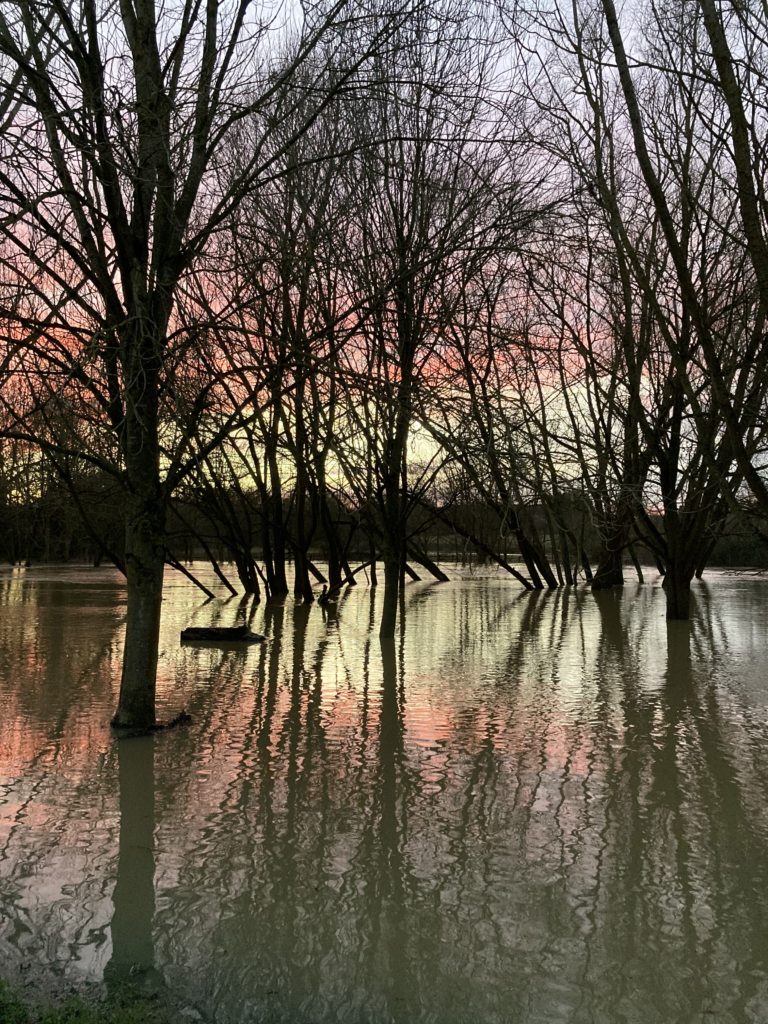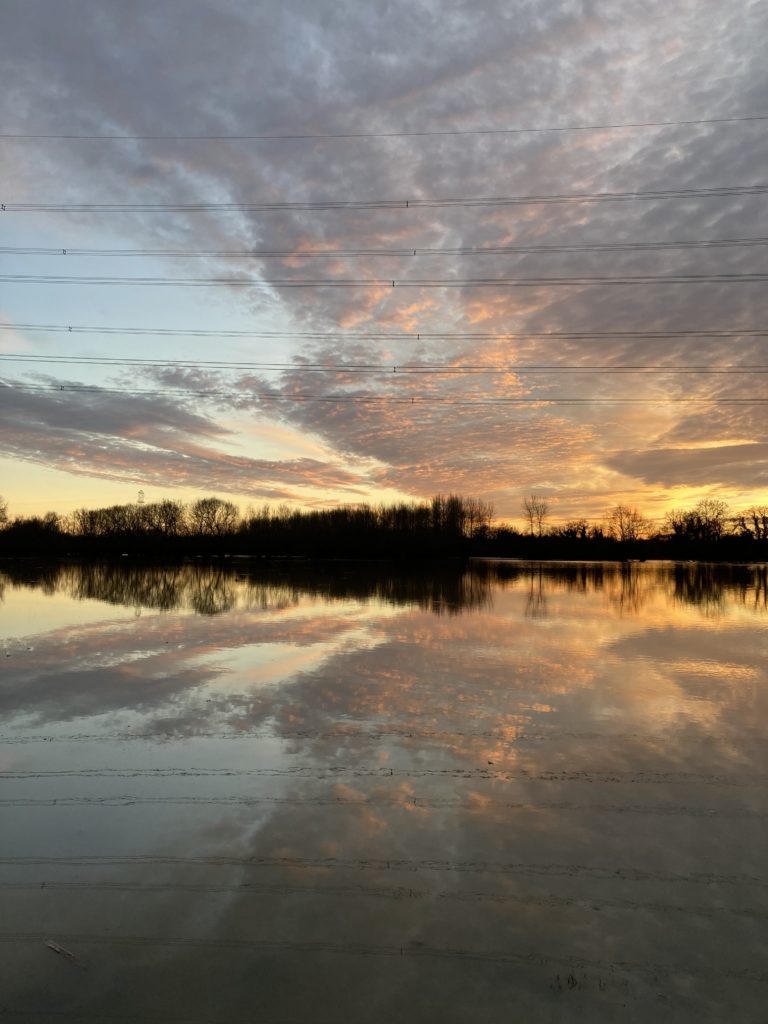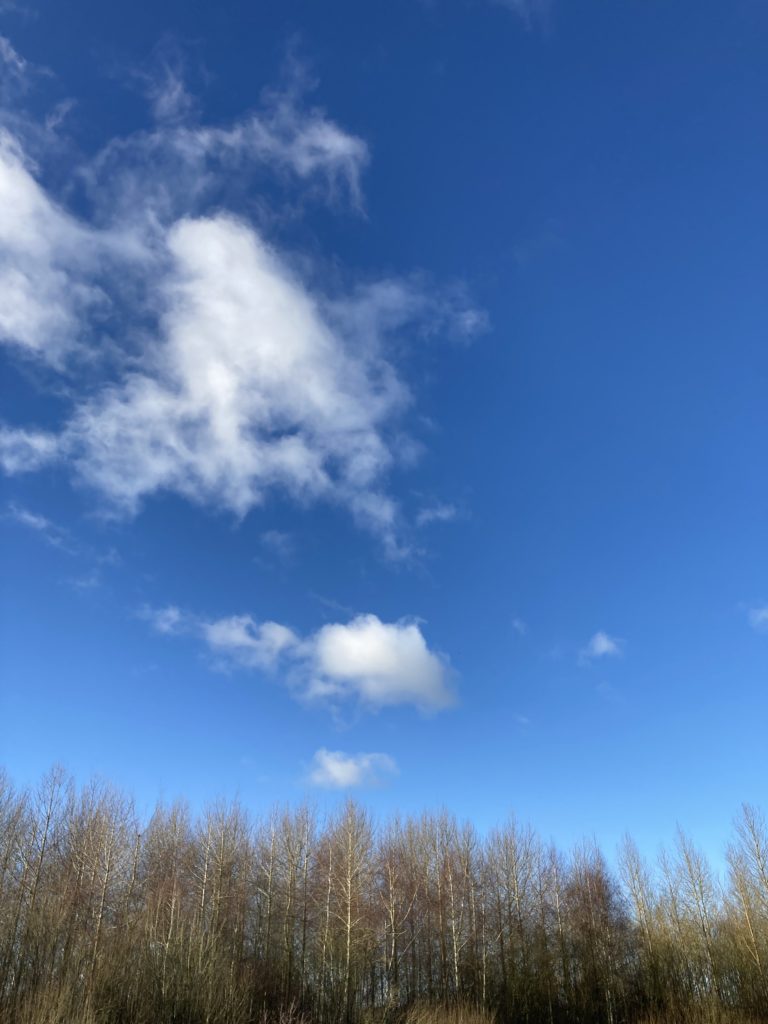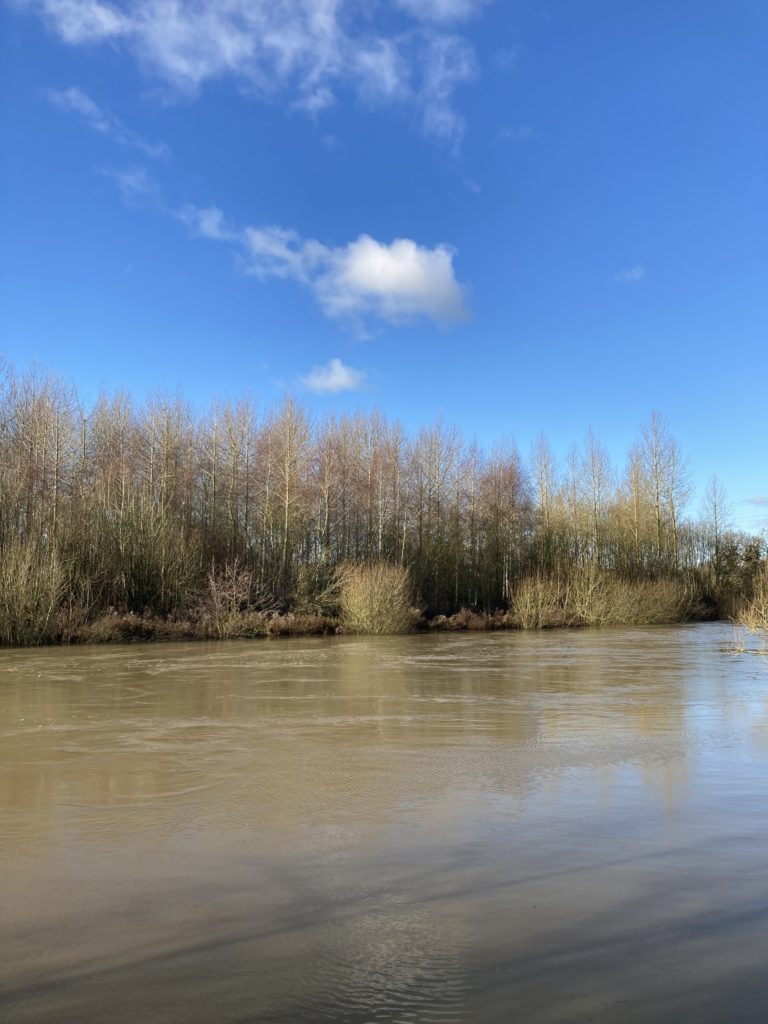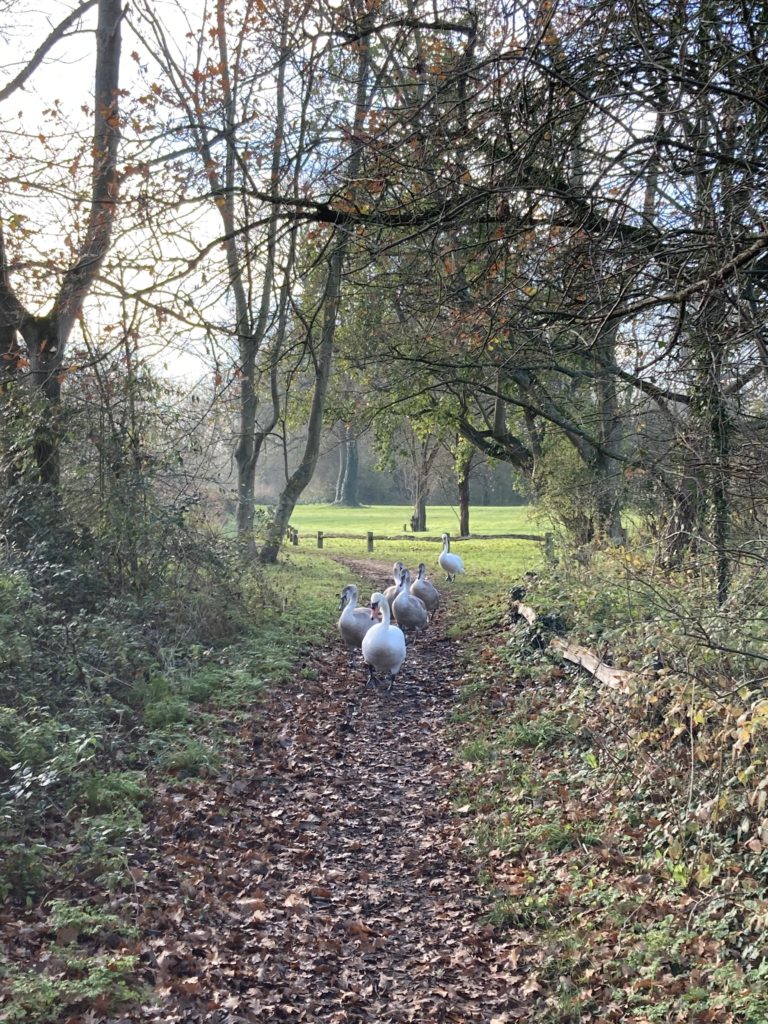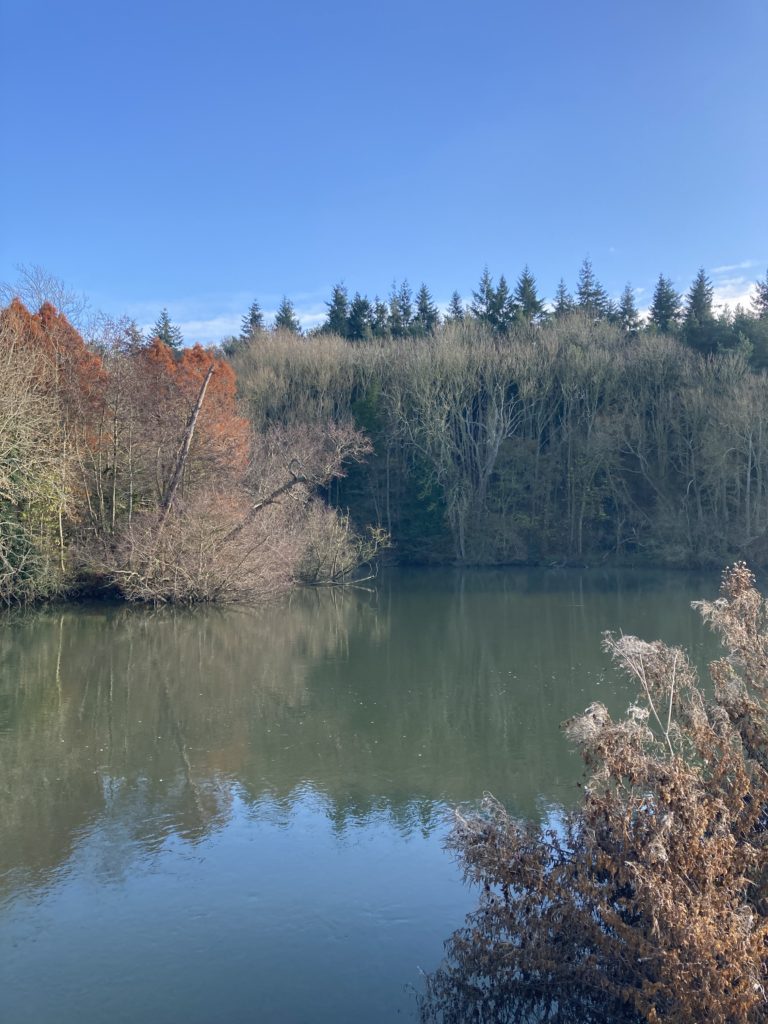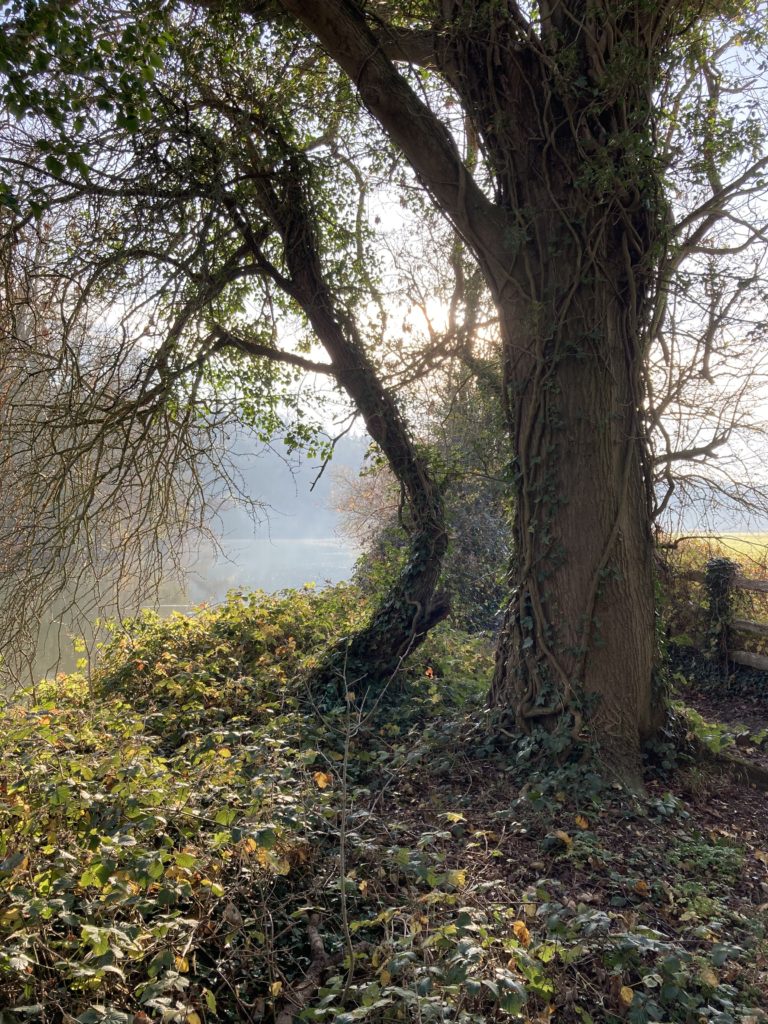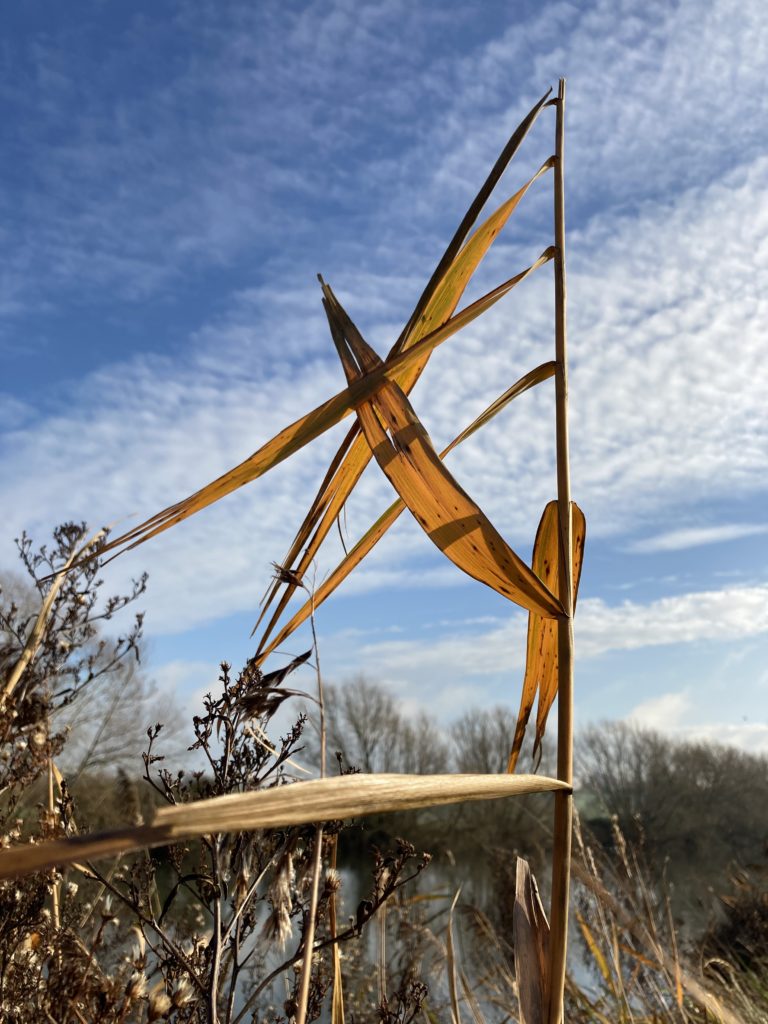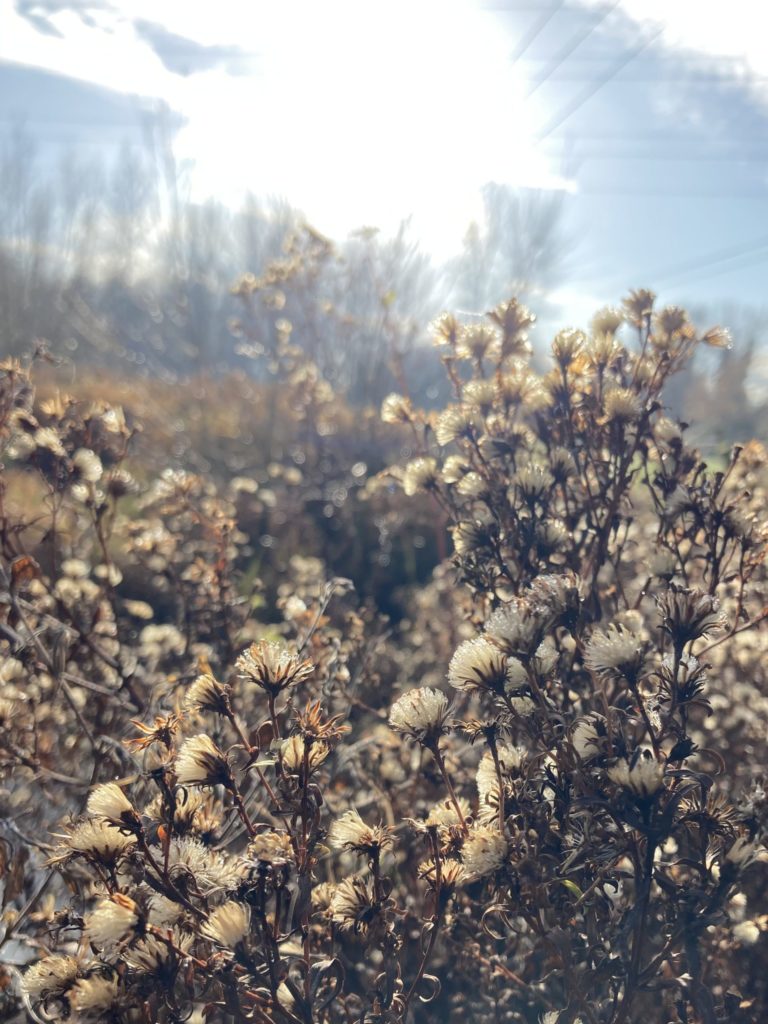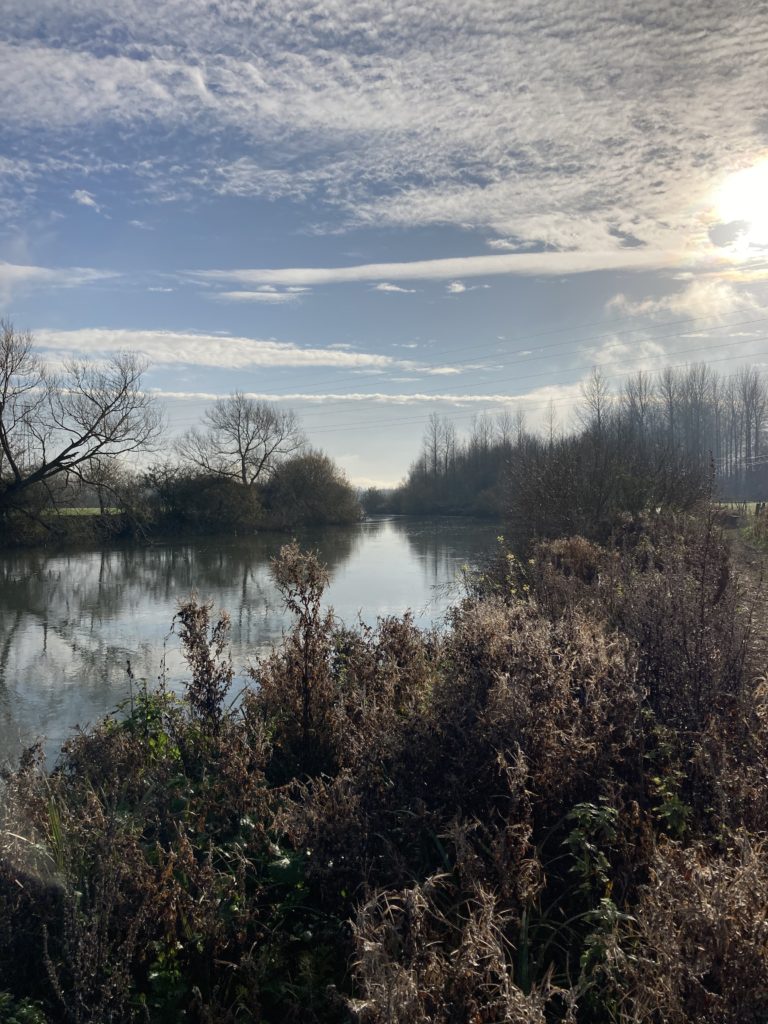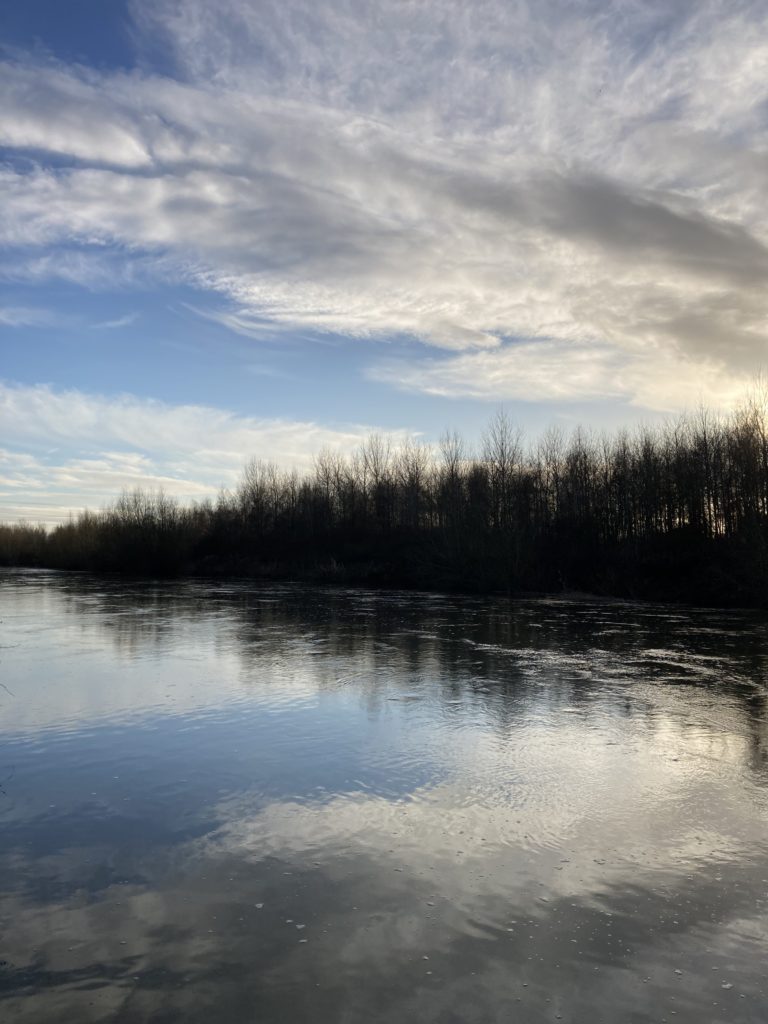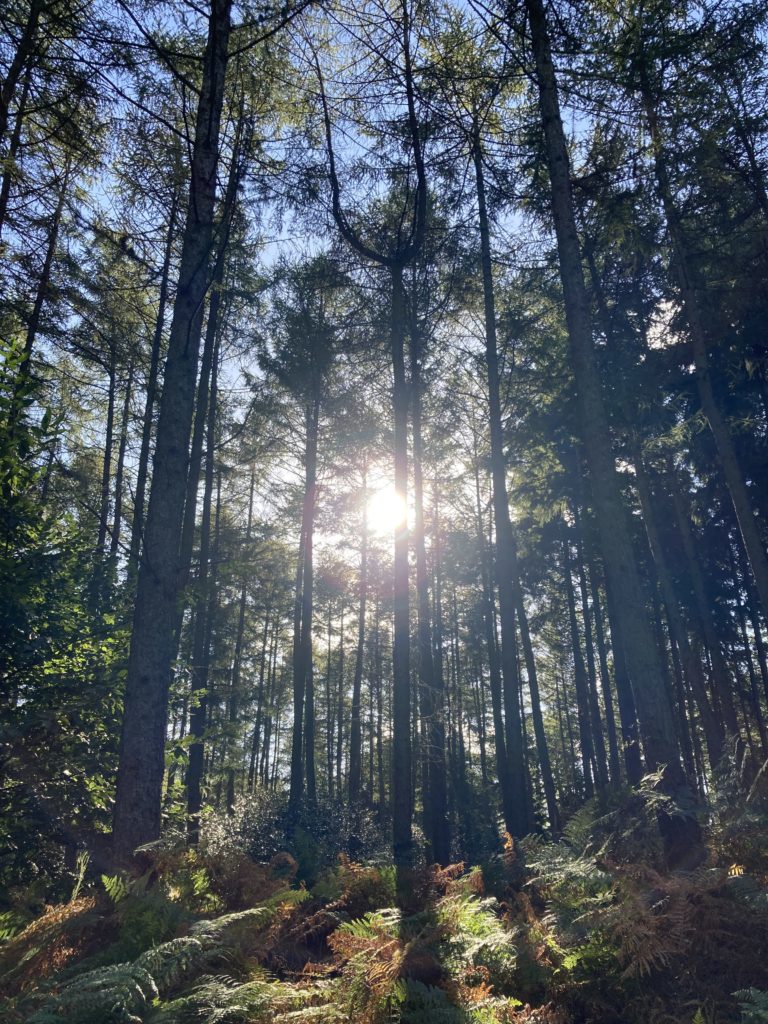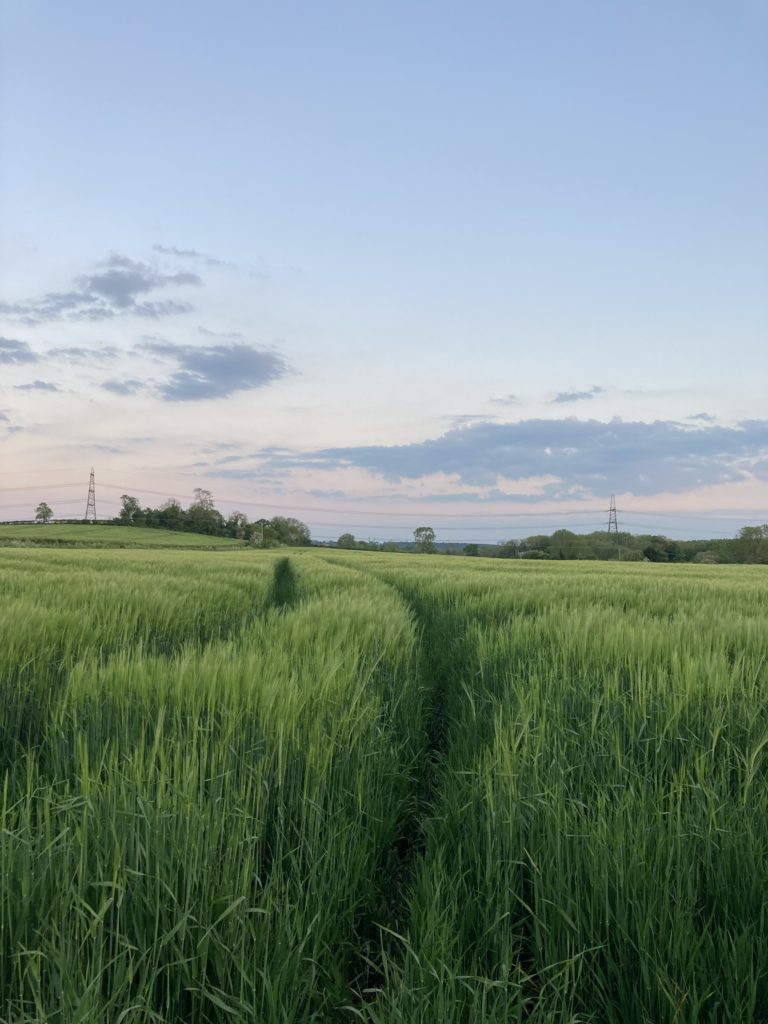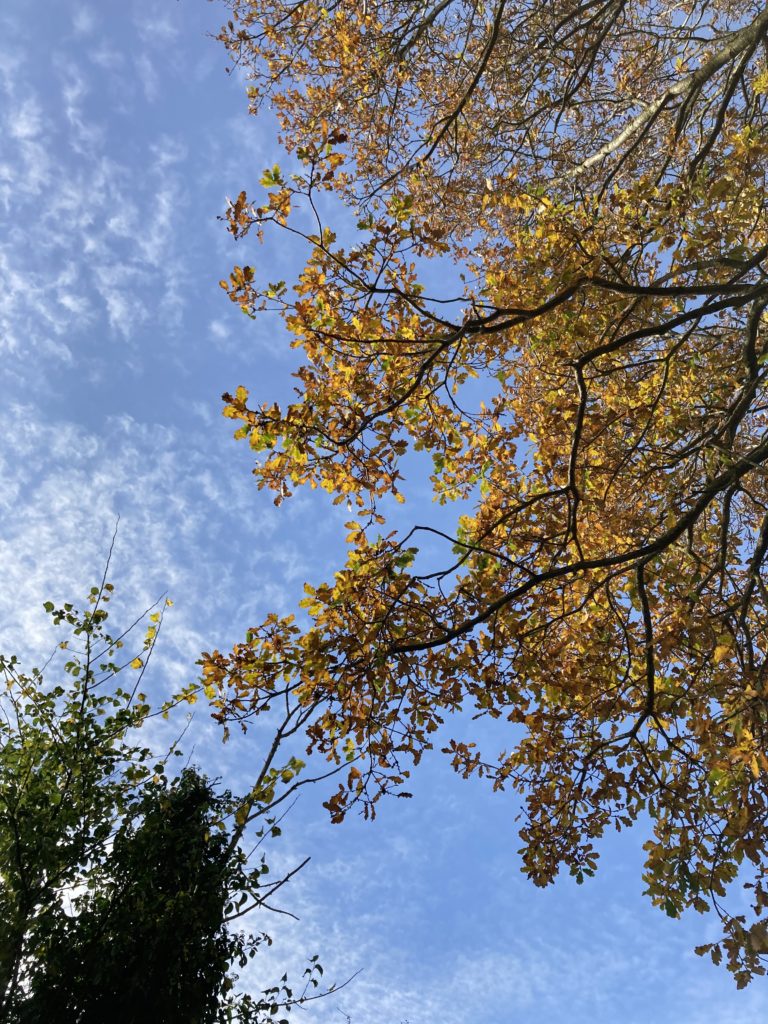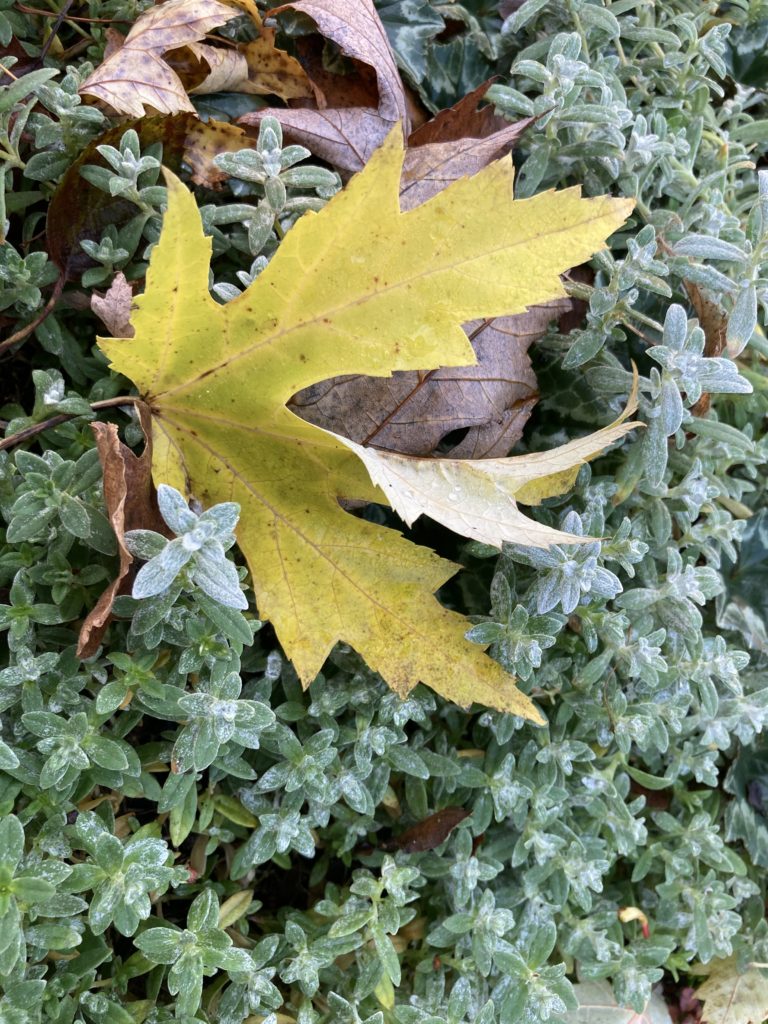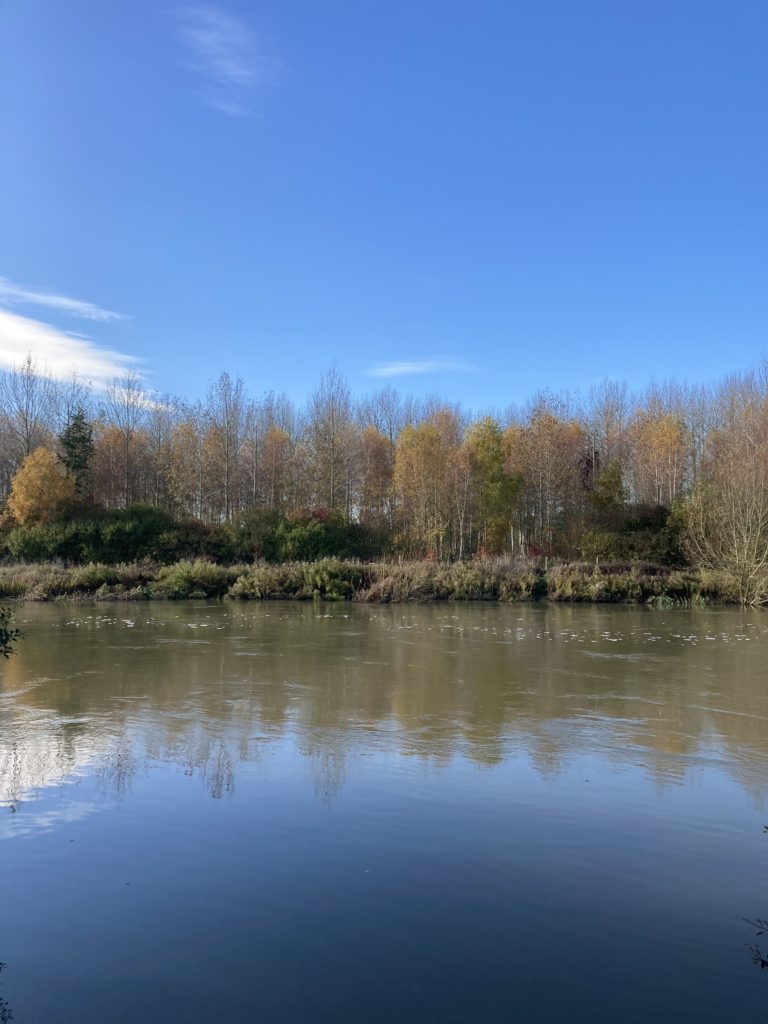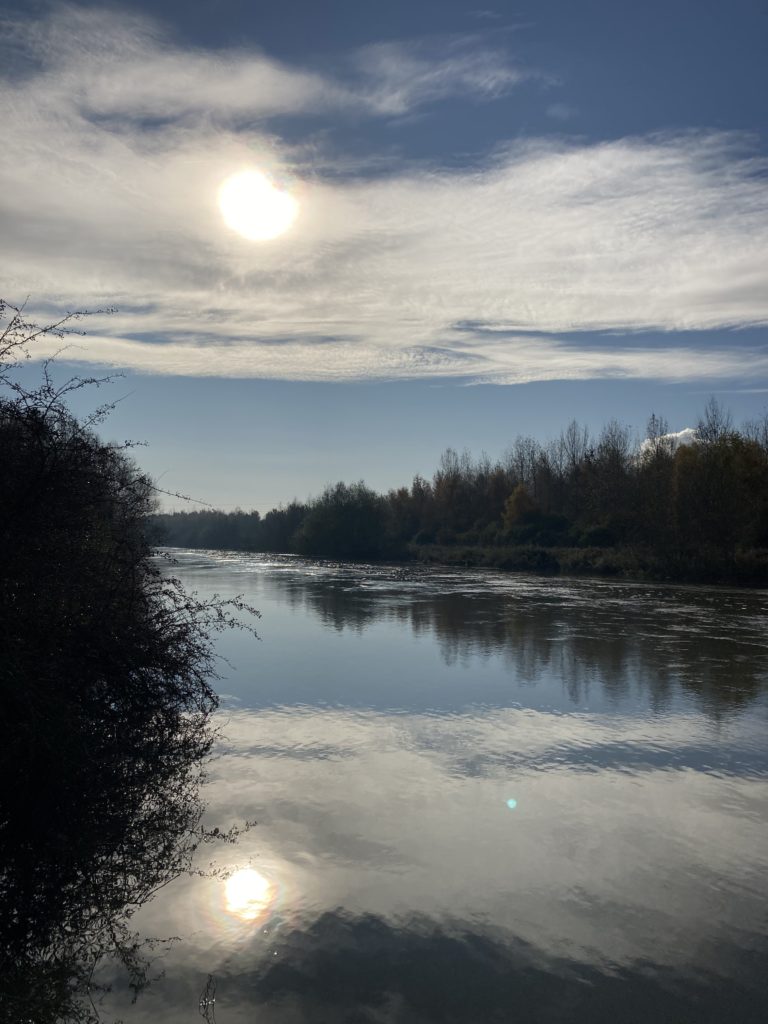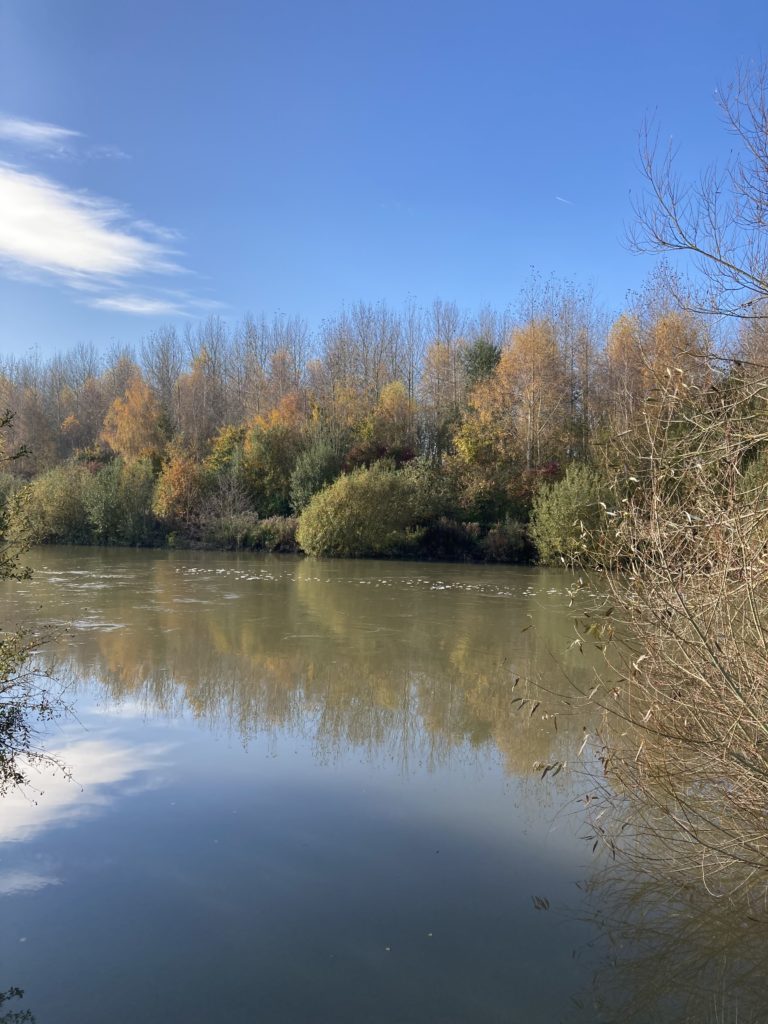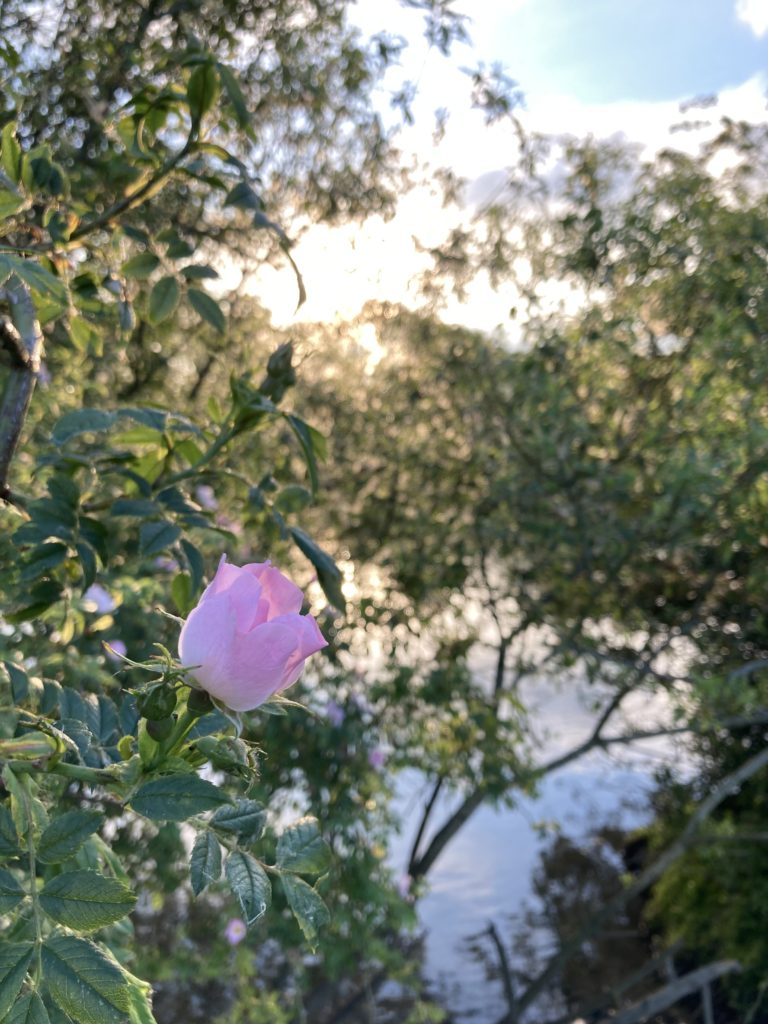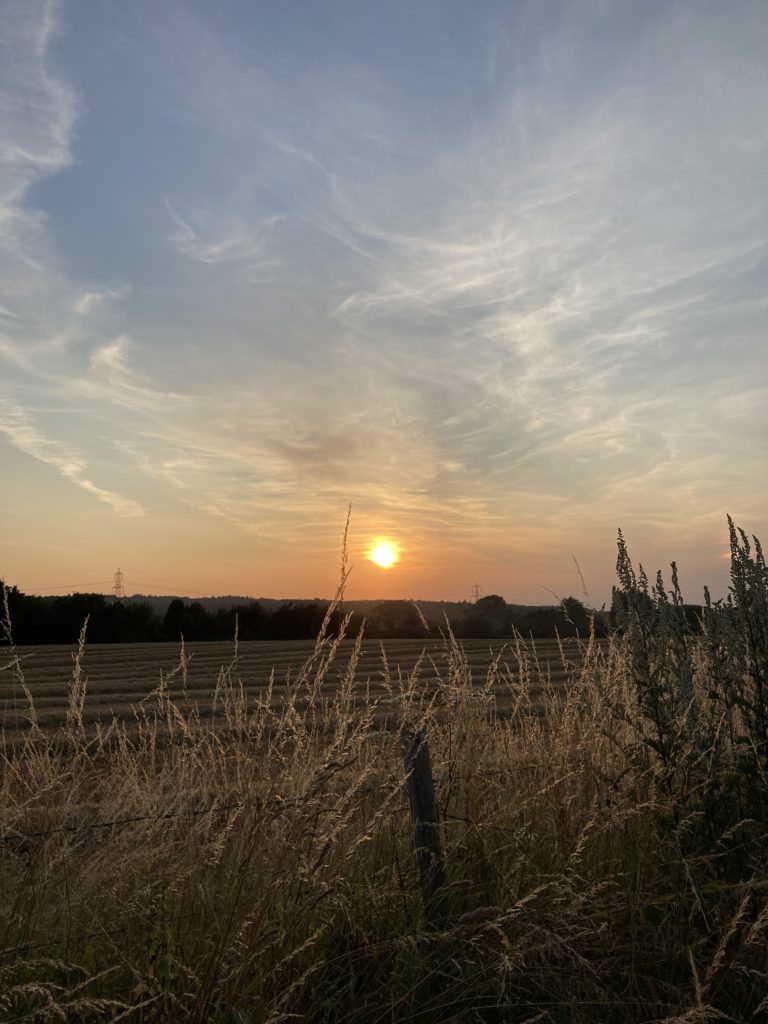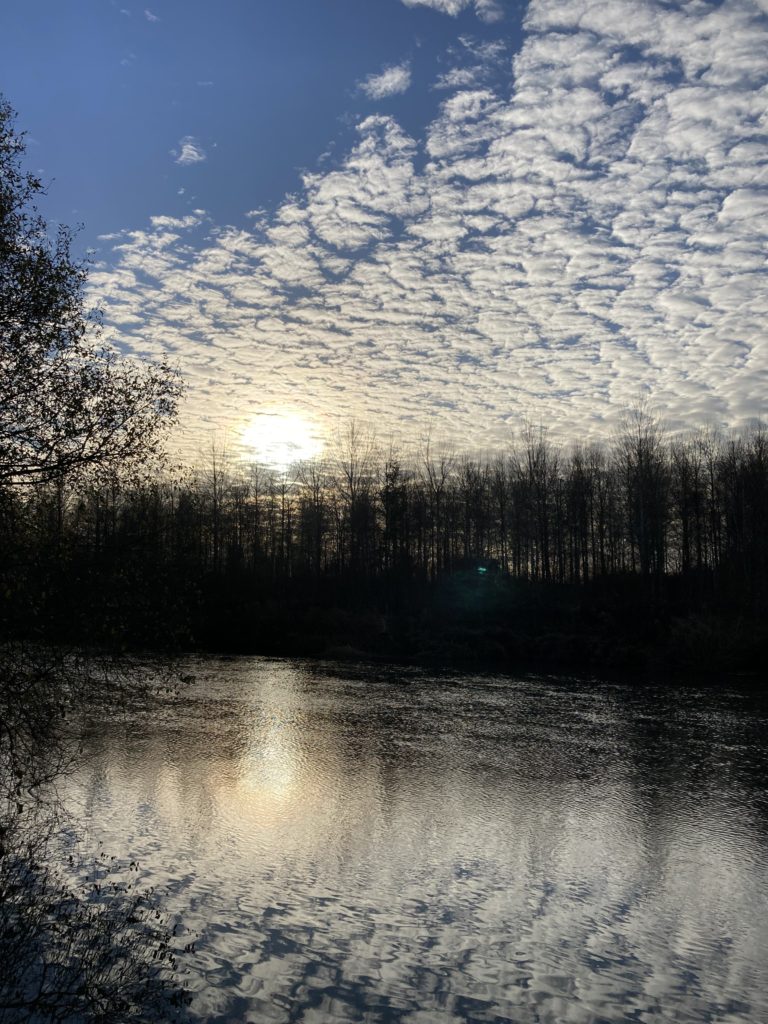Establishing a Real Balance
Ayano Hattori
Robert Simpkins
AH: How is the physicality/tactility of you with the instruments important in the framework of our collaboration? This collaboration concerns the politics of representation and aims to decolonise ethnographic traditions within such a concern and undermine the inequality between the representing and the represented.
The landscape of Oxford. Image courtesy of Robert Simpkins
RS: I think that the element of tactility does not have a direct connection with decolonisation, no. However, it may have an indirect one. It relates to method and practice. As an anthropologist and artist, we have come together and attempted to explore collaboration as a way of understanding how an artist and anthropologist might work together in a way that is more equally representative, that fairly includes issues that are important and experienced from an artistic perspective, such as ‘unknowability’ as you discussed.
Music has been one method that we have used to collaborate. The feeling of instruments in my hands are a part of engaging with music that speaks to this presence – something felt but also beyond complete comprehension and perhaps unable to be represented using methods employed by anthropology. The weight of piano keys is a part of the way I feel the world of music, and the world of music has become a place where we can both be present and engaging in collaboration. It has taken us away from traditional anthropological methods to more artistic ones. In creative output we have found a space wherein we strive to find shared space of interpretation.
In this sense, the materiality of the instruments has become a way to feel and to understand your relationship with art, with your house and garden, and with the world around you. It is a creative response to the knowledge that we share between us, rather than an analytical one, written with argument and theory. I believe that this is, in some form, a reinterpretation of the role of the anthropologist in such a collaboration, as the anthropologist exists in an interpretive space methodologically closer to the artist. I have, through the tactility of the instruments, ‘felt’ and ‘expressed’ my understanding of you as an artist in relation to her work and her world. I hope that this tactility can be one form of collaboration that prioritises an artistic approach and understanding as it exists outside of the conventions of anthropological fieldwork.
AH: This collaboration aims to undermine the inequality between the representing and the represented. The power is traditionally denoted to the party who represents, which is in the traditional case of the discipline denoted to ethnographer/anthropologist. We have been aiming to equalise the power balance by taking unconventional methodologies and to consider the issues that emerge in the process of collaboration from our two respected disciplines of art and ethnography/anthropology. So, the first issue I have recognised unfolds on this context of the method and practice of collaboration between an artist and an ethnographer/anthropologist in creativity.
Art also must be defined for this context, referring to the creative forms of my practice committed at the house. In this context, since one perspective is informed by the discipline of ethnography/anthropology, it discursively includes my creative activities such as cooking and gardening as well as my sensitivity beyond the conventional media of art which I professionally engage with. Unlike the discipline of art, ethnography/anthropology also tends to focus on human rather than medium and the quality of artistic performance and conception expressed through the languages of these media.
The idea of ‘unknowability’ emerges from the conception of art within the academic tradition of intellect, which strives to decipher art. I have also expressed the term as ‘opacity’ in different contexts across my profession. Since an ethnographer/anthropologist is driven to understand his or her research subjects, I have emphasised ‘unknowability’ and ‘opacity’ as a way of undermining this embedded structure, and the force of deciphering or understanding, which leads to reductionism.
Where a de-colonisation of ethnography or an undermining of power is concerned, what I observe is a concurrent release of yourself from the dehumanising force of the academic tradition of intellect enforced on a researcher. It forces a researcher to be a scientific being that is emotionless, mechanically accurate, expressed through the logics of words and numbers with a proven objective reality. This makes the research outcomes unique and original, humane and warm, and delicate and sensitive, restoring the researcher with sensitivities that have been eliminated in conventional methodologies. Our collaboration aims to undermine the power structure embedded between the representing/researching and the represented/researched, through which to denote the power evenly. However, the oscillation of the structure simultaneously creates the space where the researcher is humanised and given a space to express self through subjective realties.
This leads to a new constellation of issues, which can be expressed by terminology in the discipline of art. Creative practices of unconventional ethnographical/anthropological methodologies and representations allow you to reach a space of expressing self through subjective realties and subjective words in a way that is protected by the very nature of art itself. Music, among other creative forms such as poetry and creative writing you have produced, has fallen well into such a space. It is perhaps also a personal internal enquiry to ask yourself for why, but as a collaborator I must ask for its validity as a medium for collaboration as I do not practice music either professionally or as an amateur.
RS: Your perspectives on ‘unknowability’, and the importance of this to escape the reductionism that results from an imperative to explain, are valuable as an approach with the capacity to undo structural issues regarding representation that we have been discussing. I think that it is important to distinguish ‘unknowability’ from not knowing, or perhaps this is my perspective as an anthropologist because, as you said, anthropology aims to understand what we can know about people and their relationships with other people, society, places and things. Anthropology often exposes stereotypes and pluralises our understandings of behaviours that are taken for granted, but in many cases new understandings and arguments are offered in their place – so the process is cyclical.
Regarding music as a valid medium of collaboration, I certainly understand your point. While music production is not a method that I have employed in my anthropological work, neither is it one that you work with. I would certainly be very happy and interested to expand our collaborative methods to include those that you practice. This could perhaps include non-musical forms of art, or cooking and gardening as you mentioned above. These methods would perhaps also allow you to be more ‘present’ in the collaborative processes as you possess a much greater skill than I do in these mediums.
AH: When I ask you to provide me some images for this website, you said they are of “…my studio, of instruments and audio equipment. They represent items that I use to make music”. Those pictures can represent more than that they are simply the items that you use to make music- such as you as an ethnographer and further details from that aspect, or the location of the production of the music and further geographical details.
RS: I think that perhaps my response above speaks to this issue. In addition, I can say that the collection of instruments represents tools or mediums through which I have engaged in the collaboration. These are not the conventional tools of an anthropologist, though some may perform music as a part of engaging or participating with people in order to understand practices and experiences also through first-hand experience. Our case is different. The instruments have gone beyond participation as method and become a part of the process of understanding and also interpretation and expression, replacing words and written argumentation. I have not used a note pad or a Dictaphone, I have used musical instruments, which have simultaneously drawn me away from the centrality of conventional ethnographic fieldwork as the core method in research collaboration. The method, and the music produced, exists in an orbit of artistic practice, which also reorientates the location of power (of interpretation and knowledge production) away from anthropology. The outcome does not need to refer to anthropology, it is a knowledge full of its own value.
AH: Yes, it does not do so and in fact it blurs the boundary between art and ethnography/ anthropology. I think the real question here becomes about how the creative outcomes are, as I said earlier, protected by their own nature of art as subjective, which denotes the power to create images and sounds to represent. This collaboration returns an oxymoronic location of the power to the ethnographer as the very nature of art legitimates his subject view of the world.
This problem can also be found in the process of the production of music. I recorded sounds of my surroundings, which is to subvert the tradition of an ethnographer/anthropologist doing so, and sent you those files. You chose some of them among many others to use for music production, in which process I was not involved. I was not also involved in any editing processes that follow that. Because of this process, the musicality of the music remains the pure space of your subjectivity. In that process, you shift from an ethnographer/anthropologist to an artist, a creator denoted the power to represent.
To explain the production process, besides recording, my involvements are giving titles and artworks to the music after the music itself completed.
RS: I think that one of the most important points made here is that the shift in disciplinary approach is not followed by a shift in representation. When making the music, I did my best to accompany your sound recordings as a musician, so that the result would be a collaborative expression of your relationship with your art, artistic practice, and the environments in which you spend your time. I accept the point, though, as there remains a production process in which you were absent. To correct this, and as we have recently discussed, it would perhaps be better to attempt to create music together from audio recordings in a shared space. While travel restrictions remain, and it is difficult to visit your studio in person, phone or video calls may present an opportunity to collaborate within the creative process itself.
AH: I understand that the pictures of landscape I took and sent you had become the visual inspiration source for your production of the music. But, I lose track of your thoughts when you write “an imagination of presence within them”. It is an “imagination” as you wrote, and NOT a reality? How do you understand this from an anthropological aspect?
RS: I think that you raise a good point. And you are probably right – this needs a little more discussion. ‘Imagination’ was not the right word to use. The feeling that I have in the production of music is a felt reality, I feel the cold, hear the sound of feet in snow, and I see the plants in motion as air flows past and through them. In this way, I believe that this is a reality. In another sense, though, this is also an interpretation. The music is an interpretation based upon the knowledge and sensory information that you provide me with through pictures, descriptions, or audio files. I would not call any of these processes a fiction. I sense your presence, which is real, and I feel the place where you are within the music.
AH: It is your subjective reality as you rephrase it with “interpretation”. “Your presence” is like a ‘meta’ information in the audio-recording as my own existence while I was recording is not what I intended to record. That explains what I meant by “the meaning of the audio recording and the photographs”. That’s how you alter the meaning, namely the intention of the person who recorded it. Through your interpretation and music production, you framed it as my presence, which means to say you created a representation of my presence out of the recordings I did not originally mean for my own presence.
As you speak of the importance of “the feeling of the instrument” earlier as your own understanding of the world which also leads to a confirmation of your own existence in the world, you say that “the materiality of the instrument has become a way to feel and to understand your relationship with art, with your house and garden, and with the world around you”.
What is problematic here is that you said that the materiality of the instrument has become a way to feel and understand my relationship with art, which could be acceptable to feel so as your own reality only within yourself. However, extending it into the domain of representation, it controversially becomes transcendental. I have also declared that as the knowledge of ‘unknowability’. The transcendentality that emerges from the felt reality can create a certain narrative that views the world based on that transcendence. So, here the fine boundary between the felt reality and fictionality lies. In this particular case of the audio-recordings, existentialism has become a logic that bridges the felt reality and fictionality as a transcendental force. Ethnography/anthropology has invented transcendental voices and gazes in writing and films establishing an ethnographer/anthropologist as the representing. A question remains here whether the music enforces upon the listeners, including myself (as I was not involved in the production of its musicality), transcendental ears for it to be listened to as the absolute narrative. My text here functions to pose this by sharing my own view in this collaboration. The felt reality, only true to yourself, otherwise the fictionality of the reconstructed world governed by the transcendentality of your felt reality, tackles the core ethnographical/anthropological conception of veracity and authenticity.
The allowed space of subjectivity in art, namely the personal truth of the felt reality and the fictionality of a reconstructed world, could be an effective force to undermine the dehumanising force imposed on the researcher and his or her relations to their research subjects. However, when the space of subjectivity is borrowed by ethnography/anthropology, it develops into an issue as I have pointed out above. We need further effort to denote the power evenly to us of each party to avoid re-establishing the oxymoronic labels but establish a real balance.
RS: I certainly would not claim that the music is an absolute truth, which is why I describe it as an interpretation, and quite as you say, a subjective reality. What is of concern, and as you rightly highlight, are situations wherein such subjective realities are presented as universal truths or fact. In working together, distance has been a significant aspect of our sharing, whether through stories of our day, photographs, or shared walks conducted by telephone. Much effort has been made to overcome what cannot be understood by first-hand experience. It may well be, as you allude to, that in striving to understand and experience through this distance, that I have attempted, even unconsciously, to replicate a fieldsite as a place where ethnographic fieldwork is done.
This gives me pause for thought, because ‘the Field’ itself needs to be deconstructed in order to create an environment in which a knowledge of ‘unknowability’ can be respected within anthropology. In a deconstructed ethnographic approach, which takes cues from other disciplines such as art, representation should arguably include multiple mediums, multiple voices, and multiple truths. I believe that our collaboration has shown that working towards an equality of representation is not as simple as changing the ingredients of research. There are conventions and biases that remerge in altered forms. I hope that by continuing to discuss and to challenge, by continuing the attempt to find a true collaboration that creates an equality of presence, perspectives and voice, we might realise a place beyond what you describe as transcendental ethnographic ‘truth’ and reductionism, and embrace both the opacity of knowledge and our own presence within it.
AH: Spring failed to achieve its potential in the same way in my view. It first started as a way for me to document you as an ethnographer/anthropologist from the perspective of his research subject. It eventually diverted to my own piece of art, shaped by my relation to spring living in an extremely snowy geographical place, and in which spring is a space between winter and summer, metaphorically tied to memories of previous summers. The trope of ‘we paint the sky pink’ establishes a woman, a writer and painter, as a subject of touching in a feminist subversion in the politics of gender and gaze. Within those processes, the presence of you has completely slipped away from the subject matter, abandoning our ethnographical/anthropological purpose, and Spring has since developed concerning those politics of gender, gaze, and sexuality. Spring was also first meant to be coupled by your writing on me as a research subject in the same novelistic manner, but you struggled to write in this way. Our aim in this piece has not been reached, failing to balance the power of representation, now held by me.
What were your concerns in writing one that could have been coupled?
RS: As you say, I struggled to write in the novelistic manner in which you wrote. This is partly due to the fact that, described as a ‘novel’, the structural essence of the text is closer to ethnography. While ethnography is not fiction, it is also clearly not the same thing as a paper written in the material sciences. It exists as a part of the humanities, and many anthropology departments are found in faculties of art. To read ethnography is to read descriptions of people, place, senses and emotions. These are a part of the anthropologist’s toolkit in writing, because these are also aspects of life that we study. When I write poetry, or when I make music, I am, to a greater extent, released from this ambiguous boundary. You have also noted and commented on this. In the novelistic work, I found myself asking the question: Is this a work of fiction, of art, or is it a different form of ethnographic writing? The question, ever-present, creates a problem for the discipline of anthropology, and when attempting to put pen to paper.
AH: This collaboration, overriding the boundaries of ethnography/anthropology and art, has opened a rich arena of discussion about subjectivity and power. We entered into the politics of representing and represented at the smallest scale of two people experimentally both representing and being represented ourselves. Our endeavours were challenging and experimental, and creative and analytical. While we have faced problems, at times failing to achieve what we set out to do, we have opened up these issues for discussion so that future progress might be made. The depth of the issues is laid bared. I hope that our collaboration gives anthropologists/ethnographers, artists and people working in museums a space to reflect and to consider similar issues unfolding in their own contexts.




